Direction Wrocław, the “Polish Venice”
Built around the Oder River and its effluents, the city is charming. It has 127 bridges connecting 12 islands, a magnificent square surrounded by Renaissance-style mansions in pastel colors, and scattered tiny figures.
The Polish people call them “krasnales.”
They appear sitting on a bench, bustling about at the foot of a wall, eating ice cream, or reading the newspaper.
Do you want to know who they are?
Krasnales are goblins or gnomes, some little statues dotted around the city streets. No one knows precisely their number; some say there are, however, more than 300.
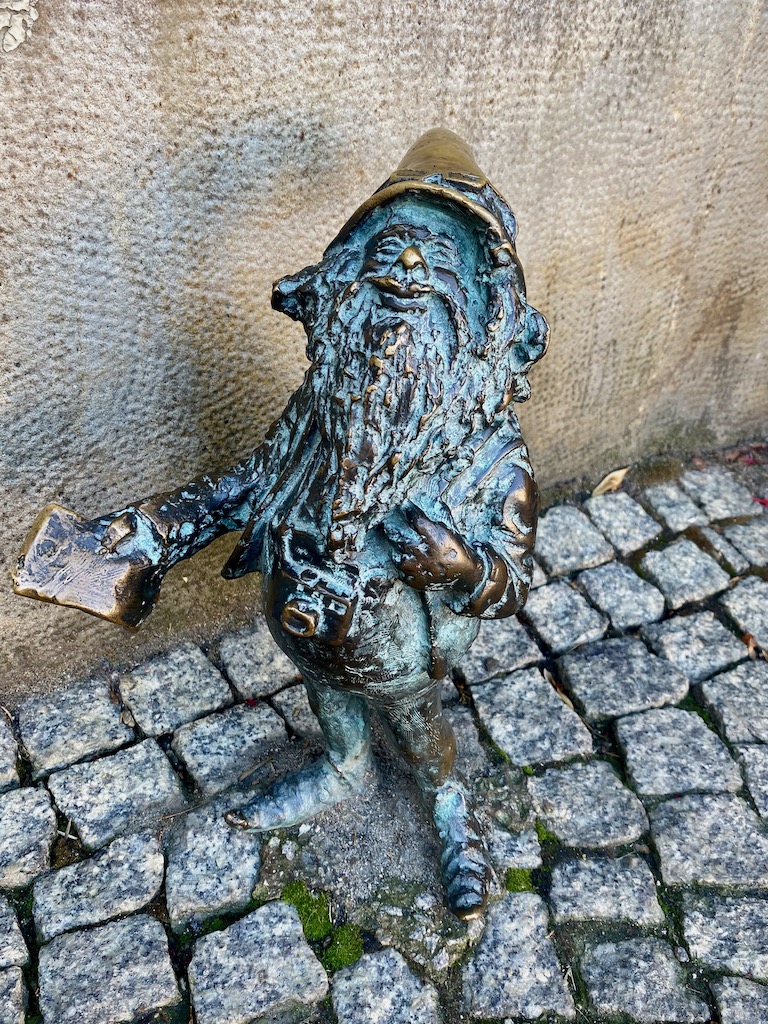



You can imagine my frenzy taking pictures of them at the start of our visit. Although they are all original and beautiful, I gave up pretty quickly. Therefore, you will only be able to admire a few of them.
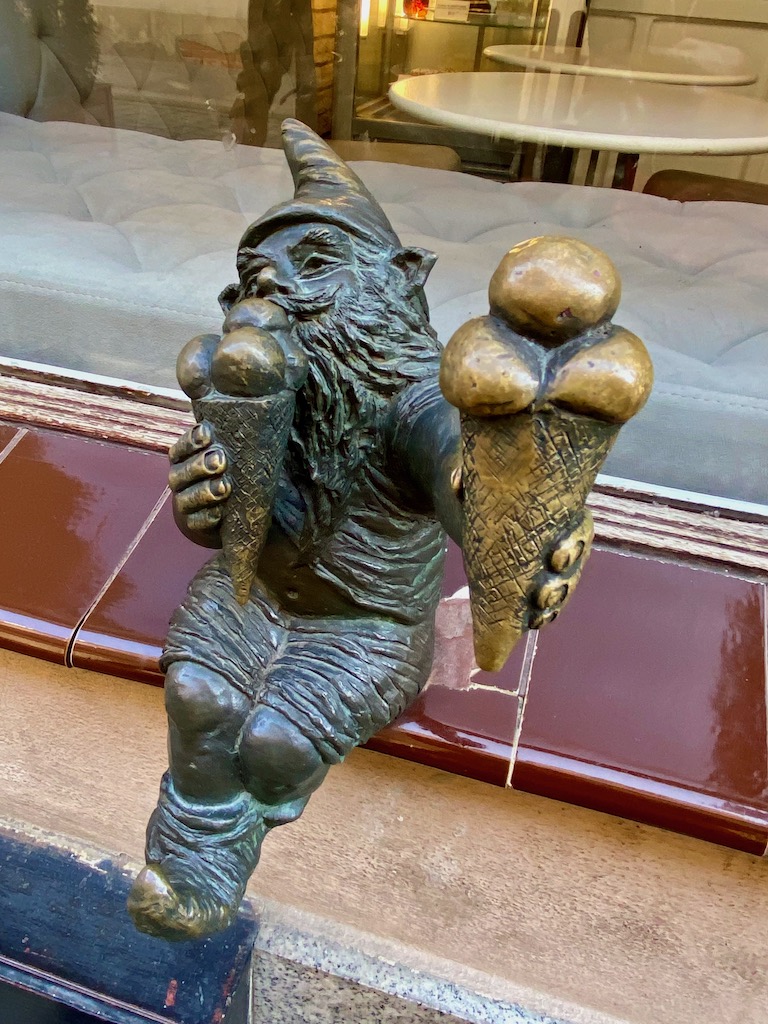

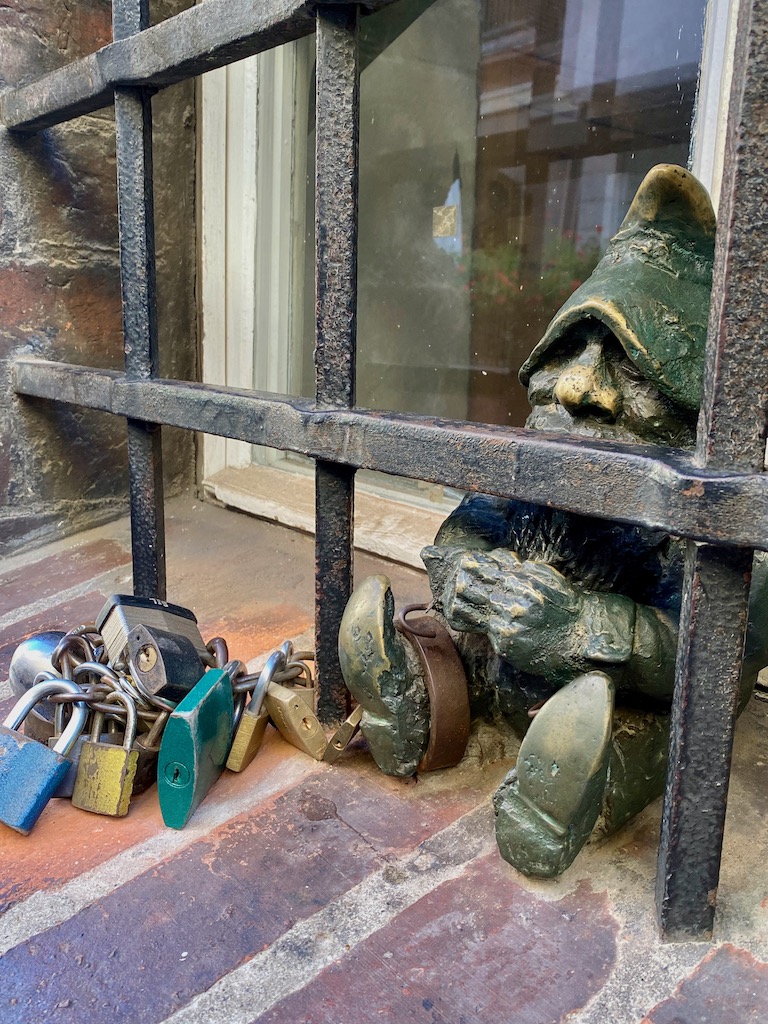

The story of those little guys
At first, I thought they were a tribute to a local sculptor. Then, I discovered their true meaning and connection to the history of Poland.
They are, in fact, a tribute paid to Alternative Orange, an anti-Soviet resistance movement that raged in the 1980s and participated in the collapse of the Communist Party.


Artist Waldemar “Major” Fydrych, the creator of the coalition, chose the absurd card to achieve his ends.
The group aimed to make fun of the then government and awaken the people’s critical spirit, slumbered by years of Communist occupation.
They painted elves on city walls and organized silly “happenings.” At one point, they brought together up to 13,000 people.
It was their way of making people laugh, showing the inconsistency of the country’s political situation, and encouraging them to stop being afraid. Fantastic demonstrations have even taken place, such as defending the rights of “dwarves.”
The arrival of the statuettes
The first, Papa Krasna or Papa Dwarf, was set up by the municipality on Świdnicka Street, where the coalition used to hang out.
Four years later, local sculptor Tomasz Moczek had the idea to create the now famous dwarves . which represent a part of the history of the daily life of Wrocław.
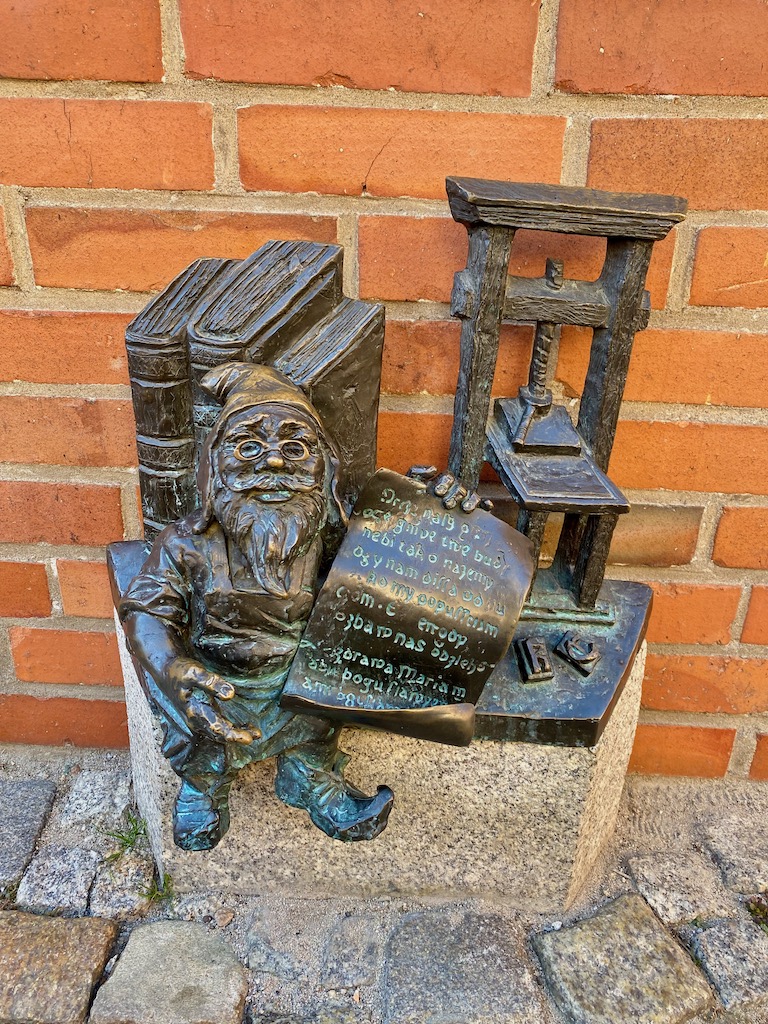



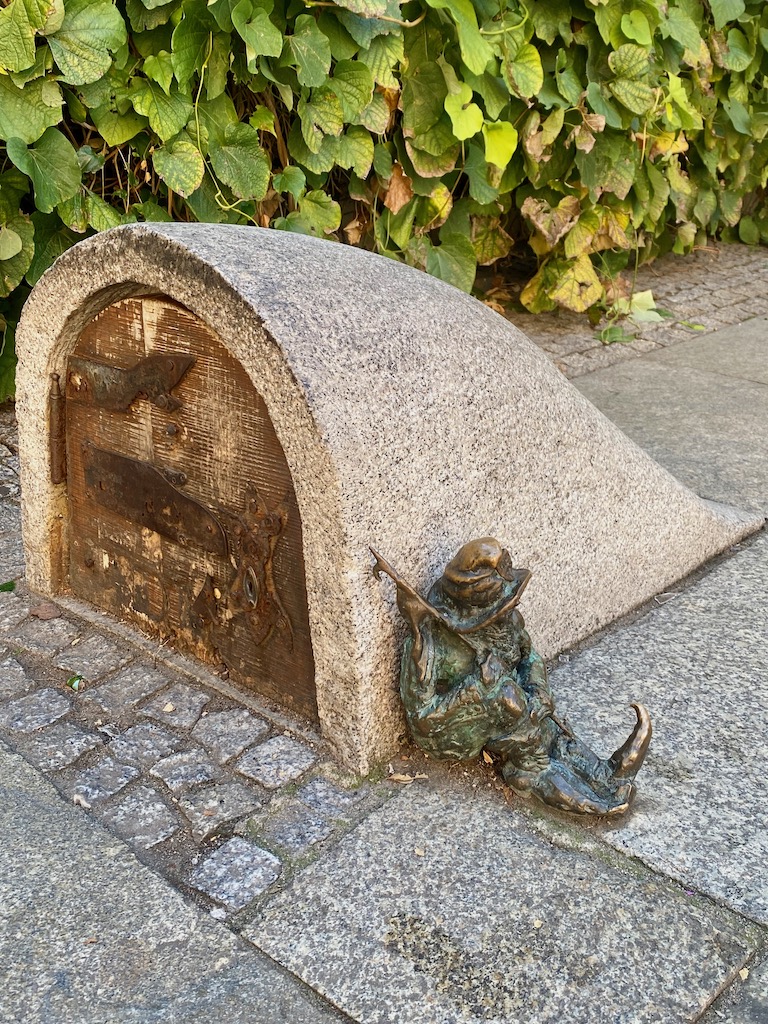

And since then, every year, new characters appear.
Upon learning the unique story behind these characters, we started to look at them differently.
A trail exists so that children can wander through Wrocław to discover them. It’s a great fun way to explore the streets and nooks and crannies of the city.
If you want to know more about the revolution of the dwarves, you can find here a site dedicated to them.
http://orangealternativemuseum.pl/#revolution-of-dwarfs


